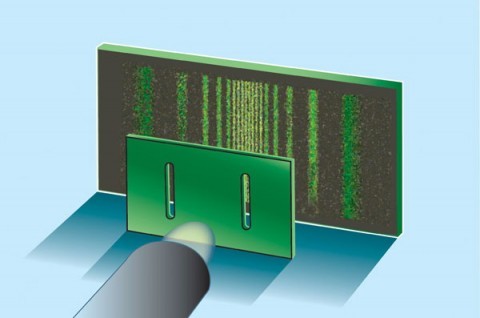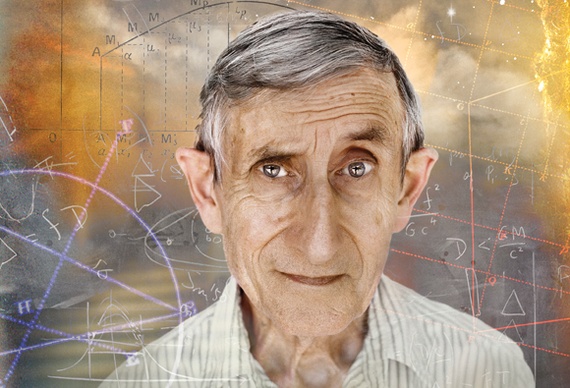In September, we 'all had a ball with the Double-Slit Experiment. Here's the link to the SSI article.
The Exec Sum is this: photons, neutrons, and even atoms are out there existing only in possibility. It is only when (as Dr. D understands it!) the particle is LOOKED AT BY HUMAN BEINGS that the particle DECIDES which possible form it will take. The universe "snaps into place" only when somebody looks at it.
This amazing discovery was pleasing and delightful to most SSI readers, and was an interesting debate for all SSI readers. You might want to meander though the article and the comments again. It beats workin', don' it?
.....
Freeman Dyson is (1) "infinitely smart" and, as a completely separate issue, (2) he specializes in physics. When he accepted the 2000 Templeton Prize, he commented on the double-slit experiment and its massive implications for science and theology.
There's no last word :- ) but if there were, this would be it, for me. We never stop debating, never try to suppress those who want to discuss a subject further. However, if you enjoyed the material on The Double-Slit Experiment, you might enjoy this Dyson summary as a "Final Chapter."
.
.
My personal theology is described in the Gifford lectures that I gave at Aberdeen in Scotland in 1985, published under the title, Infinite In All Directions. Here is a brief summary of my thinking.
The universe shows evidence of the operations of mind on three levels.
The first level is elementary physical processes, as we see them when we study atoms in the laboratory. The second level is our direct human experience of our own consciousness. The third level is the universe as a whole.
Atoms in the laboratory are weird stuff, behaving like active agents rather than inert substances. They make unpredictable choices between alternative possibilities according to the laws of quantum mechanics. It appears that mind, as manifested by the capacity to make choices, is to some extent inherent in every atom.
The universe as a whole is also weird, with laws of nature that make it hospitable to the growth of mind. I do not make any clear distinction between mind and God. God is what mind becomes when it has passed beyond the scale of our comprehension. God may be either a world-soul or a collection of world-souls. So I am thinking that atoms and humans and God may have minds that differ in degree but not in kind.
We (as humans - Dr D) stand, in a manner of speaking, midway between the unpredictability of atoms and the unpredictability of God. Atoms are small pieces of our mental apparatus, and we are small pieces of God's mental apparatus. Our minds may receive inputs equally from atoms and from God.
This view of our place in the cosmos may not be true, but it is compatible with the active nature of atoms as revealed in the experiments of modern physics. I don't say that this personal theology is supported or proved by scientific evidence. I only say that it is consistent with scientific evidence.
....
.
Dyson takes the Double-Slit Experiment even farther than most physicists do: he asserts that every atom and photon is, in fact, a tiny brain. Well, a tiny mind. He's not philosophizing, not basically; he is reacting to experiments in physics.
The definition of "mind" as Dyson is using it here:
.
NOUN
-
the element of a person that enables them to be aware of the world and their experiences, to think, and to feel; the faculty of consciousness and thought:
"as the thoughts ran through his mind, he came to a conclusion" ·
.
In my opinion, you can enjoy this subject from any perspective. As some researchers have put it, the universe looks more and more like a giant "dream." In a dream you can switch from future to past to present, from one location to another, effortlessly and instantly. The nature of reality becomes more flexible the more we think about it.
Best regards,
Jeff

